Mysterious Mount Roraima Surrounded By Myths And Clouds Of Dense Fog
A. Sutherland - AncientPages.com - Mount Roraima is located on a high plateau at the junction of Brazil, Venezuela, and Guyana.
It was carved from a single, monolithic, gigantic piece of rock with sides forming a straight vertical line.
Mount Roraima cliffs, Venezuela. Paulo Fassina. Credit: CC BY-SA 2.0
Some researchers say Mount Roraima is not a mountain but an artificially created formation. Some others say it is a rather unique work of nature. Some just say - it's a scary thing.
The top of the vertical walls is up to 400 meters. The corner-sloping ledge forms a relatively sharp upper and lower line around the perimeter. The height of the ridge reaches 170 meters! The total size of the structure reaches 1,150 meters from its base.
The Pemon (Pemón or Pemong), who are indigenous people living in areas of Venezuela, Brazil, and Guyana, this fascinating formation must have played an essential role in their rich mythology. The Pemon's mythic tradition merged into their present Catholic and Christian faiths. In their beliefs, gods reside in the grassland area's table-top mountains called tepui.
Mount Roraima. Image source
The Pemon people believe the mountains are off-limits to the living, as they are also home to ancestor spirits called mawari.
The word tepui in the local Pemon people means' House of the gods,' For centuries, people avoided climbing Mount Roraima for fear of the gods' punishment. In addition, rumors went about strange creatures that lived on top of it.
In 1912, the first non-native person who visited Roraima to study Pemon myths and language seriously was the German ethnologist Theodor Koch-Grunberg.
Important myths describe the origins of the sun and moon, the creation of the tepui mountains that
spectacularly rise from the savannahs of the Gran Sabana and the activities of the creator hero Makunaima and his brothers.
In the language of Pemon Indians, 'roroi' means "blue-green," and 'ma' - "great." Thus, the name "Roraima" is translated from the local dialect and means "big blue-green mountain."
According to the beliefs of Aboriginal peoples, a stump was left from the mighty tree. This stump was a source of all the fruits and vegetables in the world. Legendary hero Makunayma - literally means "He Works By Night" - also known as "God" ("Great Spirit") cut down the tree, and the barrel fell to the ground and caused a terrible flood.
Makunaima is the great Creator god of the Akawaio (indigenous people in Roraima (Brazil), Guyana, Venezuela, and neighboring Caribean tribes.
Traditional Cariban cosmology has been mixed to some degree with Christian elements after the arrival of Christian missionaries.
Older myths from this region of the world feature Makunaima as a legendary cultural hero who slays monsters. In more recent sources, these heroic deeds are usually ascribed to the benevolent demigod Sigu (or Sigoo) instead of Makunaima.
In the Caribs' beliefs, the great god, Makunaima, is never personified, and mortal man has never seen him.
Roraima's cliffs can be climbed to the top, which takes approximately two days. However, in the course of lifting, the traveler risks falling into a cloud of dense fog, so you must be especially careful.
It is worth noting that Roraima Mountain's most unusual form is not particularly unique because there are similar rock formations around the world.
Written by – A. Sutherland - AncientPages.com Senior Staff Writer
Updated on January 10, 2022
Copyright © AncientPages.com All rights reserved. This material may not be published, broadcast, rewritten or redistributed in whole or part without the express written permission of AncientPages.com
Expand for referencesMore From Ancient Pages
-
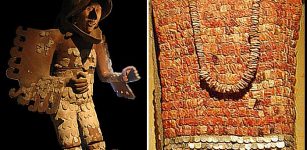 Fearsome Aztec Eagle And Jaguar Warriors Of Mesoamerica
Featured Stories | Sep 14, 2023
Fearsome Aztec Eagle And Jaguar Warriors Of Mesoamerica
Featured Stories | Sep 14, 2023 -
 Unexplained Dangerous Secret In The Great Smoky Mountains
Featured Stories | Apr 20, 2024
Unexplained Dangerous Secret In The Great Smoky Mountains
Featured Stories | Apr 20, 2024 -
 Unusual Biblical Cloud – What Was This Perplexing Atmospheric Phenomenon?
Ancient Mysteries | Feb 22, 2019
Unusual Biblical Cloud – What Was This Perplexing Atmospheric Phenomenon?
Ancient Mysteries | Feb 22, 2019 -
 New Interpretation Of The Domesday Book Of William I The Conqueror
News | Jan 16, 2021
New Interpretation Of The Domesday Book Of William I The Conqueror
News | Jan 16, 2021 -
 Thor’s Hammer Pendant Found In Norfolk May Be Linked To The Great Heathen Army
Archaeology | Oct 24, 2023
Thor’s Hammer Pendant Found In Norfolk May Be Linked To The Great Heathen Army
Archaeology | Oct 24, 2023 -
 Ancient Nanotechnology Knowledge Inspired A Modern 3D-Printable ‘Lycurgus Cup’
Ancient Technology | Mar 13, 2019
Ancient Nanotechnology Knowledge Inspired A Modern 3D-Printable ‘Lycurgus Cup’
Ancient Technology | Mar 13, 2019 -
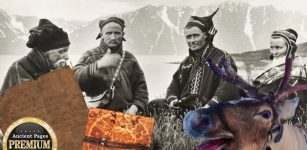 Oldest Known Sami Manuscript Discovered – It’s Undeciphered And Written By An Unknown Author
Linguistic Discoveries | Nov 26, 2024
Oldest Known Sami Manuscript Discovered – It’s Undeciphered And Written By An Unknown Author
Linguistic Discoveries | Nov 26, 2024 -
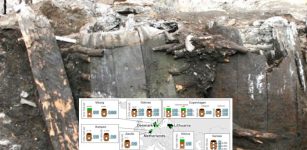 DNA In Viking Poop Sheds New Light On 55,000-Year-Old Relationship Between Gut Companions
Archaeology | Sep 5, 2022
DNA In Viking Poop Sheds New Light On 55,000-Year-Old Relationship Between Gut Companions
Archaeology | Sep 5, 2022 -
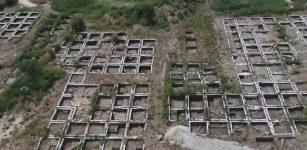 9,000-Year-Old Settlement Unearthed Near Jerusalem Sheds New Light On Stone Age Civilization
Archaeology | Jul 17, 2019
9,000-Year-Old Settlement Unearthed Near Jerusalem Sheds New Light On Stone Age Civilization
Archaeology | Jul 17, 2019 -
 An Expert Explains Why Tutankhamun’s Tomb Remains One Of The Greatest Archaeological Discoveries
Archaeology | Nov 2, 2022
An Expert Explains Why Tutankhamun’s Tomb Remains One Of The Greatest Archaeological Discoveries
Archaeology | Nov 2, 2022 -
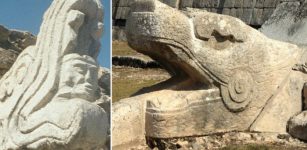 Kukulkan (Quetzalcoatl): Feathered Serpent And Mighty Snake God
Featured Stories | Feb 7, 2017
Kukulkan (Quetzalcoatl): Feathered Serpent And Mighty Snake God
Featured Stories | Feb 7, 2017 -
 Valley Temple At Giza: Great Masterwork Testifies To Remarkable Engineering Skills Of Megalith Builders
Ancient Technology | Jun 9, 2017
Valley Temple At Giza: Great Masterwork Testifies To Remarkable Engineering Skills Of Megalith Builders
Ancient Technology | Jun 9, 2017 -
 Ancient Nomads You’ve Probably Never Heard Of Disappeared From Europe 1,000 Years ago. Now, DNA Analysis Reveals How They Lived
Featured Stories | Jun 20, 2024
Ancient Nomads You’ve Probably Never Heard Of Disappeared From Europe 1,000 Years ago. Now, DNA Analysis Reveals How They Lived
Featured Stories | Jun 20, 2024 -
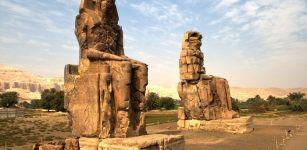 Colossi Of Memnon Guarded Temple Of Pharaoh Amenhotep III And Curious Sound Phenomenon
Featured Stories | Feb 2, 2021
Colossi Of Memnon Guarded Temple Of Pharaoh Amenhotep III And Curious Sound Phenomenon
Featured Stories | Feb 2, 2021 -
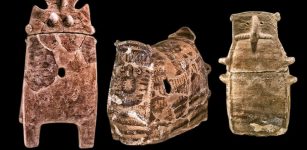 Blue Eyed People In Northern Israel 6,500 Years Ago: New DNA Results
Archaeology | Aug 22, 2018
Blue Eyed People In Northern Israel 6,500 Years Ago: New DNA Results
Archaeology | Aug 22, 2018 -
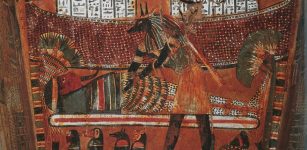 Immortal God Anubis: Lord Of The Sacred Land, Jackal God Of Mummification
Egyptian Mythology | Sep 19, 2016
Immortal God Anubis: Lord Of The Sacred Land, Jackal God Of Mummification
Egyptian Mythology | Sep 19, 2016 -
 What Was The True Meaning Of Pankration And Other Ancient Games
Archaeology | Sep 11, 2021
What Was The True Meaning Of Pankration And Other Ancient Games
Archaeology | Sep 11, 2021 -
 Archaeologists Discover Ancient Mayan Board Game – Here’s What It Can Teach Modern Educators
Featured Stories | May 19, 2023
Archaeologists Discover Ancient Mayan Board Game – Here’s What It Can Teach Modern Educators
Featured Stories | May 19, 2023 -
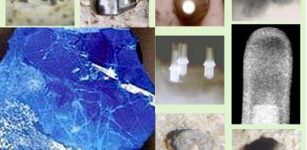 Controversial Artifacts No One Wants To Examine Thoroughly: Is There Something We Are Afraid Of Discovering?
Ancient Technology | May 22, 2019
Controversial Artifacts No One Wants To Examine Thoroughly: Is There Something We Are Afraid Of Discovering?
Ancient Technology | May 22, 2019 -
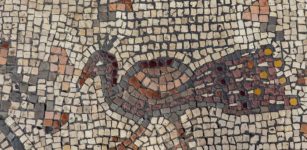 Biblical Mosaic Depicting Miracles Of Jesus Discovered At The ‘Burnt Church’ In Hippos
Archaeology | Sep 24, 2019
Biblical Mosaic Depicting Miracles Of Jesus Discovered At The ‘Burnt Church’ In Hippos
Archaeology | Sep 24, 2019



